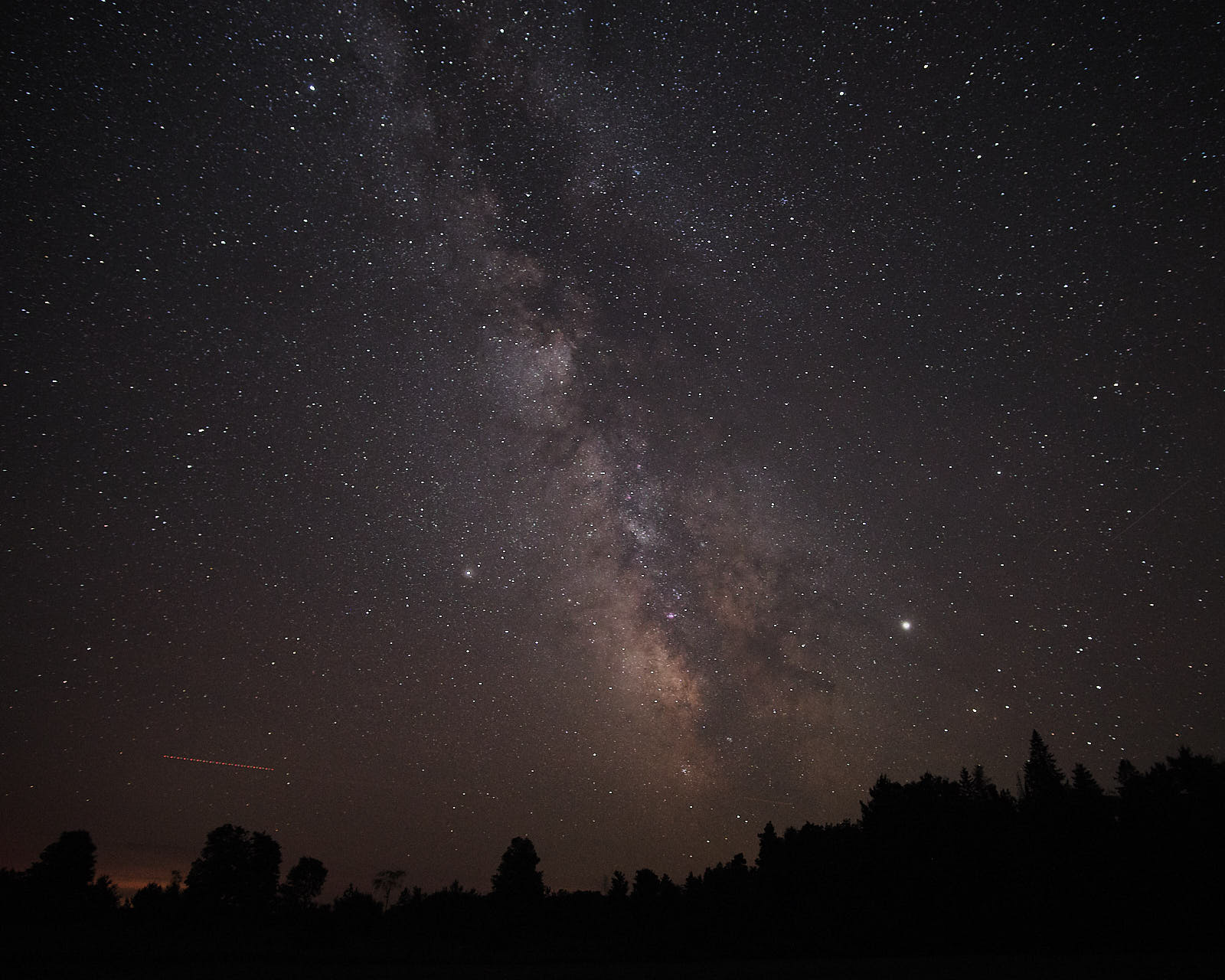
ISO 1600, F2, 25s
The term ISO refers to the current system by which we measure film speed (a.k.a sensitivity). ISO stands for International Organization for Standardization. For digital sensors we go by the ISO 12232:2019 standard.
The ISO setting is simply ‘how bright’ you want your image to be. While the exact techincal mechanisms by which digital cameras adjust the final image brightnesss is fairly complex, camera manufacturers attempt to simplify this for us consumers by providing an ISO dial. The lower the ISO number, the darker the image. The higher, the brighter.
On modern digital cameras (including your smart phone), the ISO dial is usually both manually or automatically adjustable depending on your settings. The ISO dial typically starts somewhere between ISO 25 and ISO 200 and goes up to ISO 25000 (ala Fuji X-T3) or beyond.
ISO and image noise
You may notice that as you increase the ISO, the images that your camera captures become increasing noisy. For example, you may notice speckles of color in dark areas of the image. You may notice blotchy colors and inaccurate colors. These are all artifacts of the image that become noticeable as the ISO is pushed higher. So where does it come from?
In fact, every image ever created has noise - it is just a matter of how noticeable it is. Noise becomes apparent as the signal to noise ratio (SNR) decreases - that is, as the amount of light we capture approaches the level of noise the sensor experiences, the noise becomes more apparent in our final images.
Capturing light
The amount of light captured by our cameras is controlled by two mechanisms - the aperture of the lens, and the shutter speed of the camera. As the aperture becomes physically smaller, less light is passed through the lens for any given amount of time. And as the shutter duration decreases, so too does the amount of light that hits the sensor. This is precisely why night photography requires either large aperture lenses or long shutter durations, or both - to capture enough light that our cameras can generate images where the noise is not noticeable.
Sources of noise
There are many sources of noise, ranging from the randomness of the photons captured (resulting in shot noise), to the thermal characteristics of your sensor (thermal noise), among many others. Generally speaking, shot noise is the most prevalent. Most of the time there’s not much one can do to eliminate the noise (the main exception being long exposure photography), so the important thing to remember here is if you want noise free images, you need to get more light! You can get more light by widening your aperture, slowing your shutter speed, or using a flash.